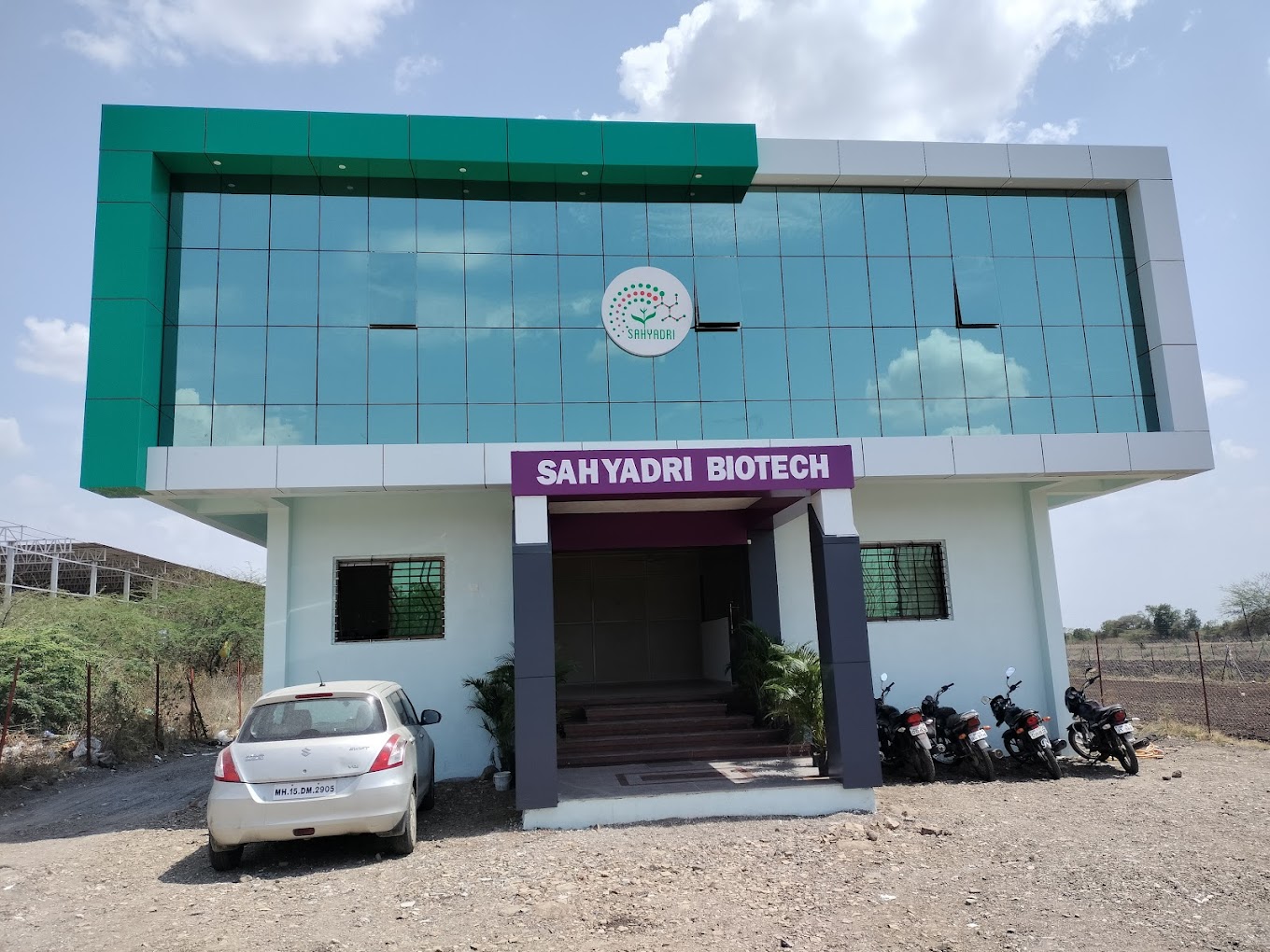
Welcome To Sahyadri Biotech
Welcome To Sahyadri Biotech
Sahyadri, the name originates from the great Sahyadri mountain range that covers an area of 160,000 km2 in a stretch of 1,600 km parallel to the western coast of the Indian peninsula from Gujarat to Tamil Nadu.
Sahyadri also mentions the fertile deccan plateau, the habitat for millions of farming community for their farming activities.
The driving force for the startup was to encourage and motivate farmers for modern agriculture with scientific views and techniques keeping ancestral roots.
The organization has its foundation roots in October 2006 with a very few scientific apparatuses for basic experiments in a single 10X10 feet room. Since then, the experiments for various product formulae were conducted with series of success and failures. As the aim of our start up was very clear, the products formulated were tested on various crops and locations for their efficacy in terms of benefits in yield and quality of farm produce.
Alongside we conducted various famer meeting and training programs on farms to educate farmers about importance and need of scientific soil and water testing for optimum use of Agri inputs and other resources keeping soil healthy and fertile.
Organic is the way to go healthy strong
Pure organic farming means avoiding all unnatural chemicals. In this process of farming, all the fertilisers and pesticides are obtained from natural sources such as bone meal or blood meal.
Organic is the way to go healthy strong
Pure organic farming means avoiding all unnatural chemicals. In this process of farming, all the fertilisers and pesticides are obtained from natural sources such as bone meal or blood meal.
Our Achievements
Our Achievements
Agriculture
Agricultural inputs are the resources used in farming operations, including seeds, fertilizers, pesticides, and machinery. Productivity refers to the amount of output produced per unit of input. Understanding the linkages between agricultural inputs and productivity is critical for promoting sustainable and efficient agriculture.
Agricultural productivity is the ratio of agricultural inputs to outputs. The greater the agricultural output, the higher the agricultural productivity of a farm. In simple terms, we can think of agricultural productivity using equation: Output ÷ Input = Productivity.
Biotechnology
Also known as Agri-Tech, is an area of agricultural science involving the use of scientific tools and techniques, including genetic engineering, molecular markers, molecular diagnostics, vaccines, and tissue culture, to modify living organisms: plants, animals, and microorganisms. Crop biotechnology is one aspect of agricultural biotechnology which has been greatly developed upon in recent times. Desired trait is exported from a particular species of Crop to an entirely different species. These transgene crops possess desirable characteristics in terms of flavor, color of flowers, growth rate, size of harvested products and resistance to diseases and pests.
Bio Pesticides
Certain types of pesticides derived from such natural materials as animals, plants, bacteria, and minerals. Currently, there are many more registered biopesticide active ingredients and active biopesticide products. Biopesticides can also states products that include naturally occurring substances that control pests (biochemical pesticides), microorganisms that control pests (microbial pesticides), pesticidal substances produced by plants containing added genetic material (plant-incorporated protectants) and botanical extracts with secondary metabolites and oils with repellent molecules acts as Botanical pesticides.
Fertilizers
Any material of natural or synthetic origin that is applied to soil or to plant tissues to supply plant nutrients. Fertilizers may be distinct from liming materials or other non-nutrient soil amendments. Many sources of fertilizer exist, both natural and industrially produced. For most modern agricultural practices, fertilization focuses on three main macro nutrients: nitrogen (N), phosphorus (P), and potassium (K) with additional supplements like secondary and micronutrients and to some extent microbial inoculums, the Bio-fertilizers. Farmers apply these fertilizers in a variety of ways through dry or pelletized or liquid application processes, using large agricultural equipment or hand-tool methods.

